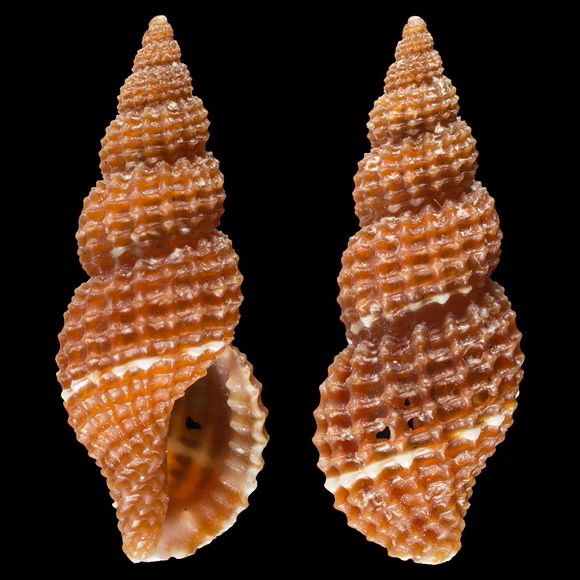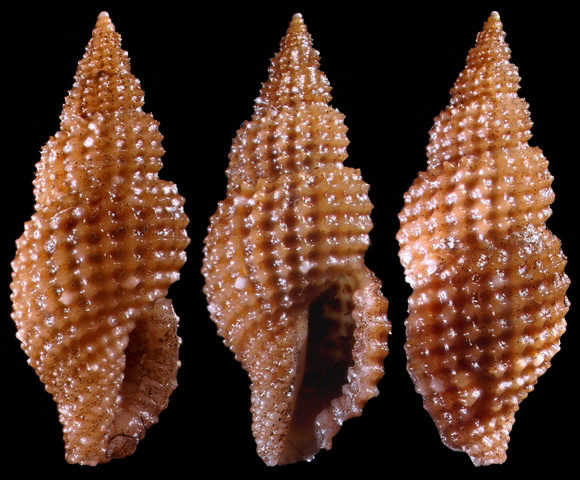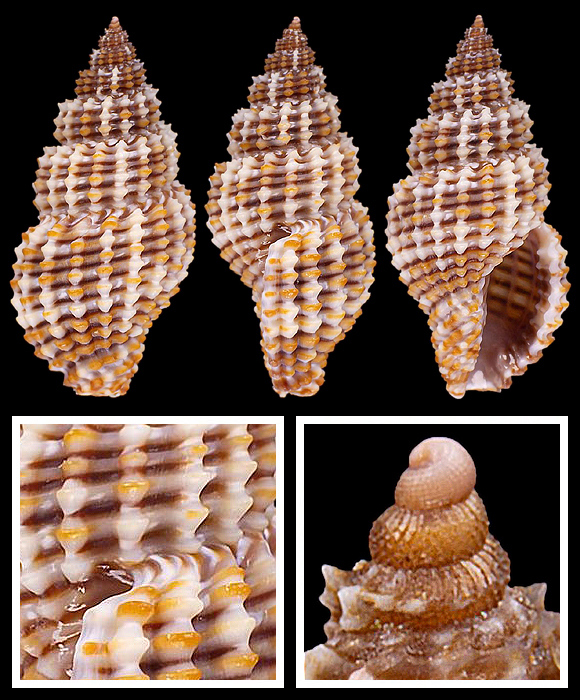
Predator in the infralittoral.
Original taxon: Philbertia contigua.
Close to R. spadiana, but with a multispiral protoconch.
« Protoconch multispiral of 2.7 convex whorls […]; protoconch I of 0.6 whorls […] with irregularly placed small tubercles; protoconch II of 2.1 whorls, with a diagonally cancellate sculpture, and two suprasutural small spiral threads. Teleoconch of 7 convex whorls. Axial sculpture of 16-18 orthocline or slightly opisthocline ribs (sometimes more in larger specimens), and interspaces wider (x 1.5) than the ribs. Spiral sculpture on the last whorl of 17-20 cordlets, of which 6-7 (rarely 8) above the aperture, slightly narrower than the axial ribs. Cancellation rectangular, with small and elongated tubercles at the intersection of axials and spirals. Tubercles on the two adapical cordlets narrow and spinulose (especially in fresh or subadult specimens). Sculpture visible in transparency throughout the internal shell wall. » – Pusateri & al.: “A revision of the Mediterranean Raphitomidae 1”, Iberus vol. 30, Barcelona 2012, p.46.
Philbertia contigua MNHN-IM-2000-25080 in the collection of the Muséum National d’histoire naturelle of Paris, France. Original pictures provided by M. Caballer for the MNHN.
– (CC BY) –

« Subsutural ramp narrow, with small tubercles in correspondence with the axial ribs tip. Columella simple, slightly sinuous anteriorly, gently angled posteriorly. Outer lip with 8-9 strong inner denticles (rarely 10-11), the most anterior delimiting the siphonal canal, the most posterior delimiting the anal sinus. Colour uniformly tawny, rarely darker, sometimes with lighter spots. Suprasutural cordlet occasionally white. Occasional comma-shaped white spots on the subsutural ramp. » – Ibid.
Adult specimen from 40m deep, off Le Scole, south of the harbour, Isola del Giglio, Toscana, W. Italy. 7,5mm.

Original pictures provided by A. Nappo (IT).
– (CC BY-NC-SA) –